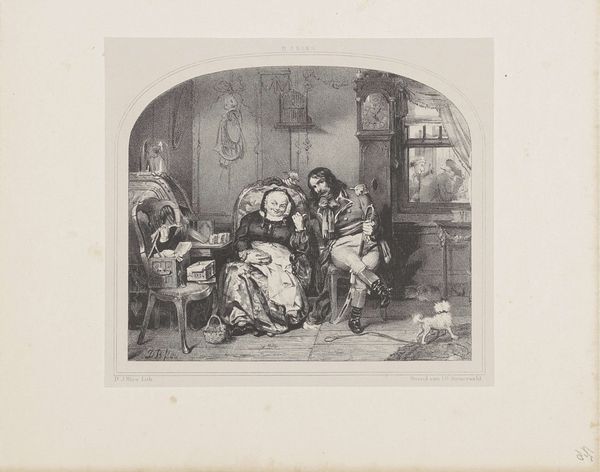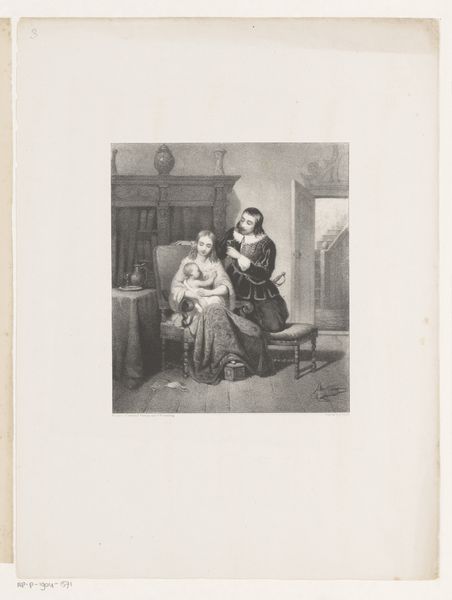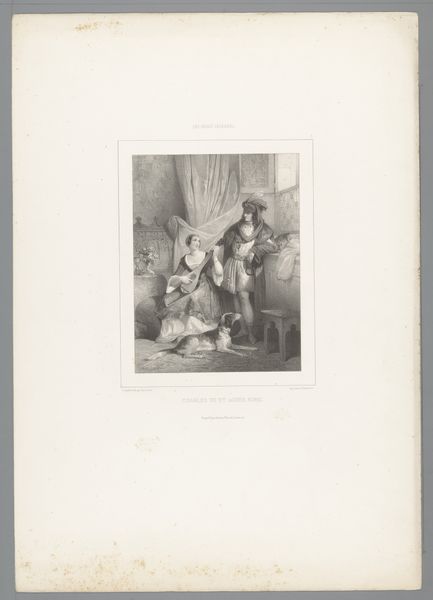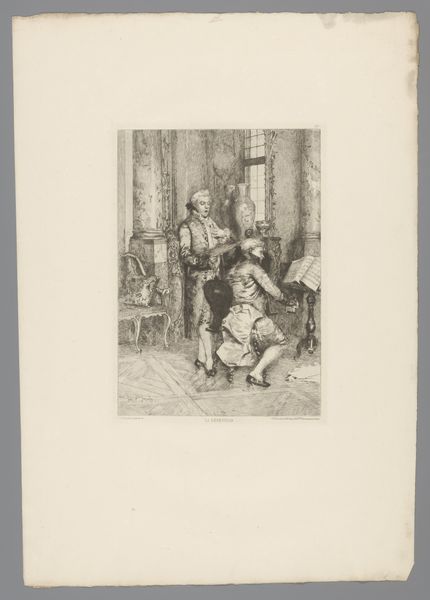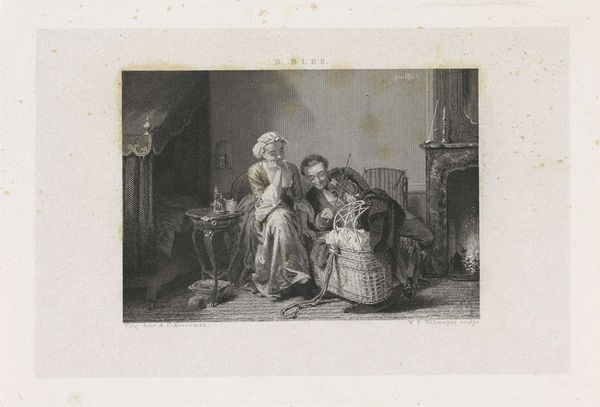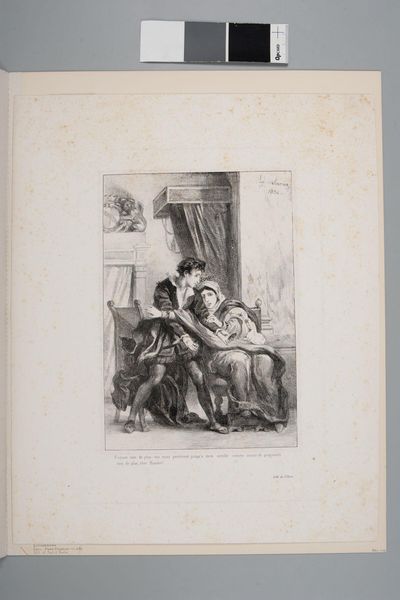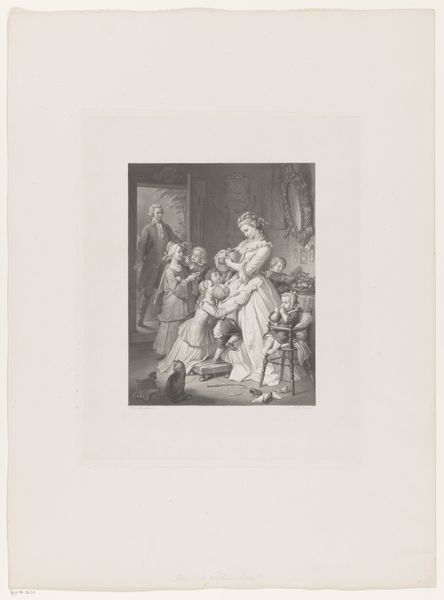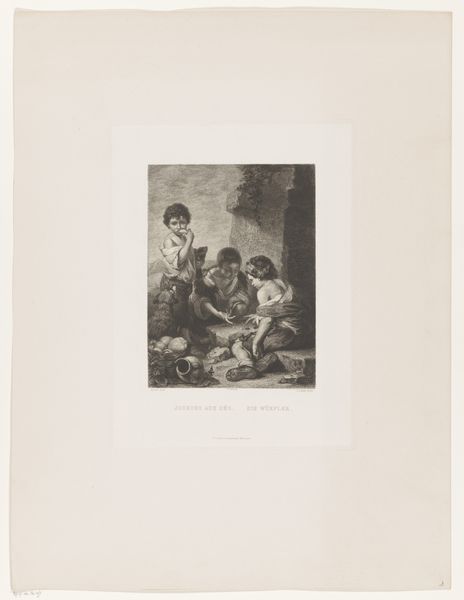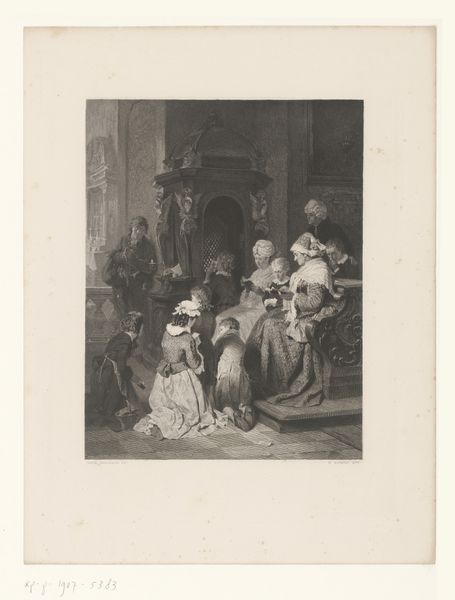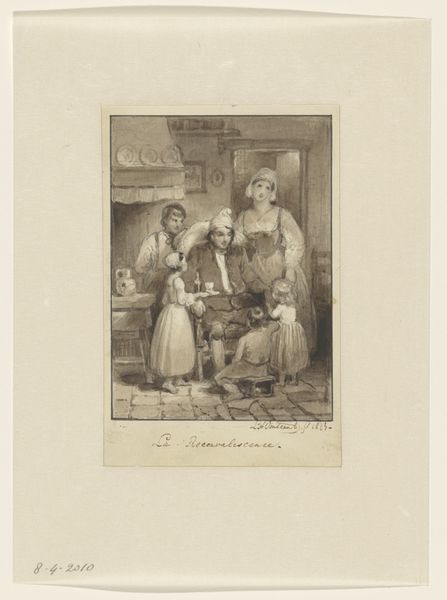
print, etching
# print
#
etching
#
landscape
#
genre-painting
#
realism
Dimensions: height 341 mm, width 261 mm
Copyright: Rijks Museum: Open Domain
Editor: Here we have Jacobus Ludovicus Cornet's etching, "Familie buiten aan tafel", which translates to "Family outside at the table," created sometime between 1847 and 1865. The everyday scene gives off an unassuming yet comforting air. What draws your attention in this piece? Curator: What's immediately striking is the labor implied within this ‘comforting scene’. Etchings like this, reproduced for a burgeoning middle class, romanticized the ‘genre painting’ of rural life. Consider the contrast – the supposed idyll of the family meal *outside*, juxtaposed with the tangible work involved in *making* that meal: the pots, the gathered crops hinted at. It subtly obscures the means of production, even as the very medium of etching– a reproductive technology – brings art into the hands of the consuming public. What is 'outside' to you? A constructed leisure, a real geography, or something else? Editor: That's a fascinating point. It is interesting how we’re distanced from what enables their leisure. So, do you see the artist then as commenting on this burgeoning consumerism of the middle class? Curator: I would say they were *participating* in it! By depicting what *appears* to be ‘simple’ family life, the artist, through his etching technique, produced images intended for a consumer culture hungry for such nostalgic scenes. Look closely at the details of the objects, the clothing. Etchings like this perpetuated ideals and fantasies surrounding domesticity. The art serves a clear role here in visualizing social norms of its era. Editor: That reframes how I see it entirely. I was focusing on the intimate family gathering, and missed its social role in visual culture and class-making at the time. Curator: Exactly. Art is never divorced from its material context or means of production. Keeping that in mind, perhaps, lets us ‘see’ what it is doing more accurately.
Comments
No comments
Be the first to comment and join the conversation on the ultimate creative platform.
